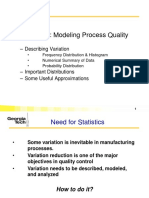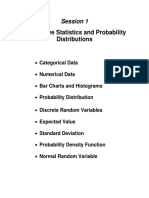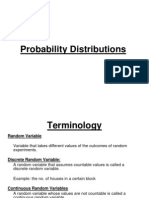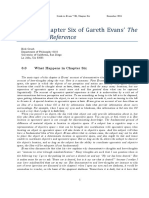0% found this document useful (0 votes)
90 views46 pagesIEM 4103 Quality Control & Reliability Analysis IEM 5103 Breakthrough Quality & Reliability
This document outlines a lecture on modeling process quality. It discusses the DMAIC process for quality improvement, which stands for define, measure, analyze, improve, and control. It also covers describing variation through histograms, numerical summaries, and probability distributions. Key probability distributions like discrete and continuous are presented.
Uploaded by
Hello WorldCopyright
© © All Rights Reserved
We take content rights seriously. If you suspect this is your content, claim it here.
Available Formats
Download as PDF, TXT or read online on Scribd
0% found this document useful (0 votes)
90 views46 pagesIEM 4103 Quality Control & Reliability Analysis IEM 5103 Breakthrough Quality & Reliability
This document outlines a lecture on modeling process quality. It discusses the DMAIC process for quality improvement, which stands for define, measure, analyze, improve, and control. It also covers describing variation through histograms, numerical summaries, and probability distributions. Key probability distributions like discrete and continuous are presented.
Uploaded by
Hello WorldCopyright
© © All Rights Reserved
We take content rights seriously. If you suspect this is your content, claim it here.
Available Formats
Download as PDF, TXT or read online on Scribd
/ 46






































































































